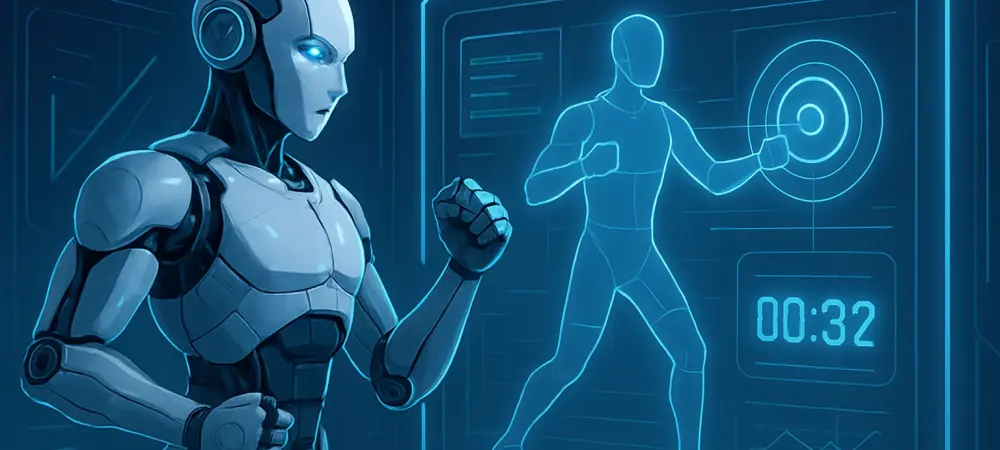Imagine a world where robots can master complex tasks like navigating a busy kitchen or assembling intricate machinery without ever stepping into reality, learning instead in a digital realm so lifelike that they can fail and adapt in perfect safety, slashing costs and risks. This isn’t a distant dream but a reality unfolding through cutting-edge AI technology. A groundbreaking tool is reshaping how robots are trained, using meticulously crafted virtual environments to prepare them for the unpredictable chaos of everyday scenarios.
This innovation tackles a pressing challenge in robotics: the scarcity of diverse, high-quality training data that has long slowed progress. With industries like healthcare, manufacturing, and logistics increasingly relying on robotic solutions, the need for faster, safer, and more effective training methods has never been more urgent. Virtual worlds, powered by AI, offer a scalable answer, promising to bridge the gap between controlled tests and real-world demands. This development stands as a pivotal step toward integrating robots seamlessly into daily life.
The Struggle with Traditional Robot Training
Training robots to handle real-world tasks has historically been a grueling, resource-heavy endeavor. Physical trials often involve repeated failures, damaged equipment, and significant safety hazards, especially when testing in unpredictable environments. The process is not only slow but also prohibitively expensive, limiting the speed at which robotic solutions can be deployed across sectors hungry for automation.
A core issue lies in the lack of sufficient training data. Unlike AI models for language or image recognition, which can draw from vast online datasets, robotics often requires specific, context-rich information that’s hard to gather. This data shortage means robots frequently struggle to adapt to new settings or unexpected obstacles, stalling advancements in fields where precision and flexibility are paramount.
A Game-Changer: Steerable Scene Generation
Enter “steerable scene generation,” an AI-driven tool developed through a collaboration between MIT’s Computer Science and Artificial Intelligence Laboratory (CSAIL) and the Toyota Research Institute. This platform creates highly detailed virtual environments—think bustling restaurants or cluttered living rooms—where robots can practice tasks without real-world consequences. It’s a revolutionary approach that sidesteps the limitations of physical testing. Built on a foundation of over 44 million 3D room models, the system generates diverse, realistic scenes tailored to specific training needs. Using a decision-making algorithm called Monte Carlo Tree Search (MCTS), it refines these environments by adding objects or increasing complexity, ensuring they mirror genuine challenges. This adaptability means robots can train for scenarios as varied as navigating a hospital ward or stocking a warehouse shelf, all within a controlled digital space.
Expert Voices on Virtual Training’s Promise
Industry leaders and researchers alike are buzzing about the potential of this technology. Nicholas Pfaff, an MIT PhD student and CSAIL researcher, highlights the unique application of MCTS, describing scene-building as a “sequential decision-making process” that crafts increasingly sophisticated training grounds. His perspective underscores how this method pushes beyond static simulations, offering dynamic spaces for robotic learning.
External experts echo this enthusiasm. Jeremy Binagia from Amazon Robotics praises the tool for ensuring “physical feasibility” while producing varied and engaging scenes vital for effective training. Such endorsements signal broader industry recognition: virtual training isn’t merely an alternative but a cornerstone for scaling robotic capabilities to meet modern demands. The consensus points to a future where robots integrate effortlessly into complex human environments.
Real-World Impact and Industry Applications
The implications of this technology stretch across multiple sectors. In manufacturing, robots trained in virtual factories can master assembly lines littered with unexpected obstacles, reducing downtime and errors. Healthcare could see robots navigating hospital corridors in simulated chaos, preparing them to assist with patient care or deliver supplies without risking safety during training.
Logistics, too, stands to benefit immensely. Virtual warehouses filled with shifting inventory and dynamic human interactions provide a testing ground for robots to perfect package handling or route optimization. By replicating these high-stakes environments digitally, companies can deploy machines that are already adept at handling real-world unpredictability, saving time and resources in the process.
Charting the Path Ahead for AI-Driven Training
For those eager to adopt this technology, practical steps are already emerging. Engineers can start by customizing virtual scenes to reflect specific challenges their robots will face, whether it’s a crowded retail space or a precision-driven lab. Gradually ramping up complexity—adding more variables or simulating human interference—ensures robots build resilience for actual deployment.
Looking further, the development team envisions expanding the tool’s scope from 2025 onward, integrating a wider array of objects and crafting entirely new assets through generative AI. Beyond technical growth, plans to build a collaborative user community could create a shared repository of training data, amplifying the diversity of scenarios available. This collective effort promises to elevate not just individual projects but the entire field of robotics.
Reflecting on a Milestone in Robotics
Looking back, the emergence of steerable scene generation marked a turning point in how robots were prepared for real-world challenges. It addressed the critical shortage of training data with innovative virtual environments that adapted and evolved. Industry experts and researchers alike celebrated its potential, recognizing it as a foundational shift in robotic development.
The journey didn’t end there, though. The push to expand capabilities and foster a collaborative data-sharing network laid the groundwork for even greater strides. For companies and innovators, the next steps involved embracing customization, iterating with complexity, and contributing to a growing ecosystem of virtual training resources. This collective momentum hinted at a landscape where robots could truly adapt to any challenge, redefining their role in society.

